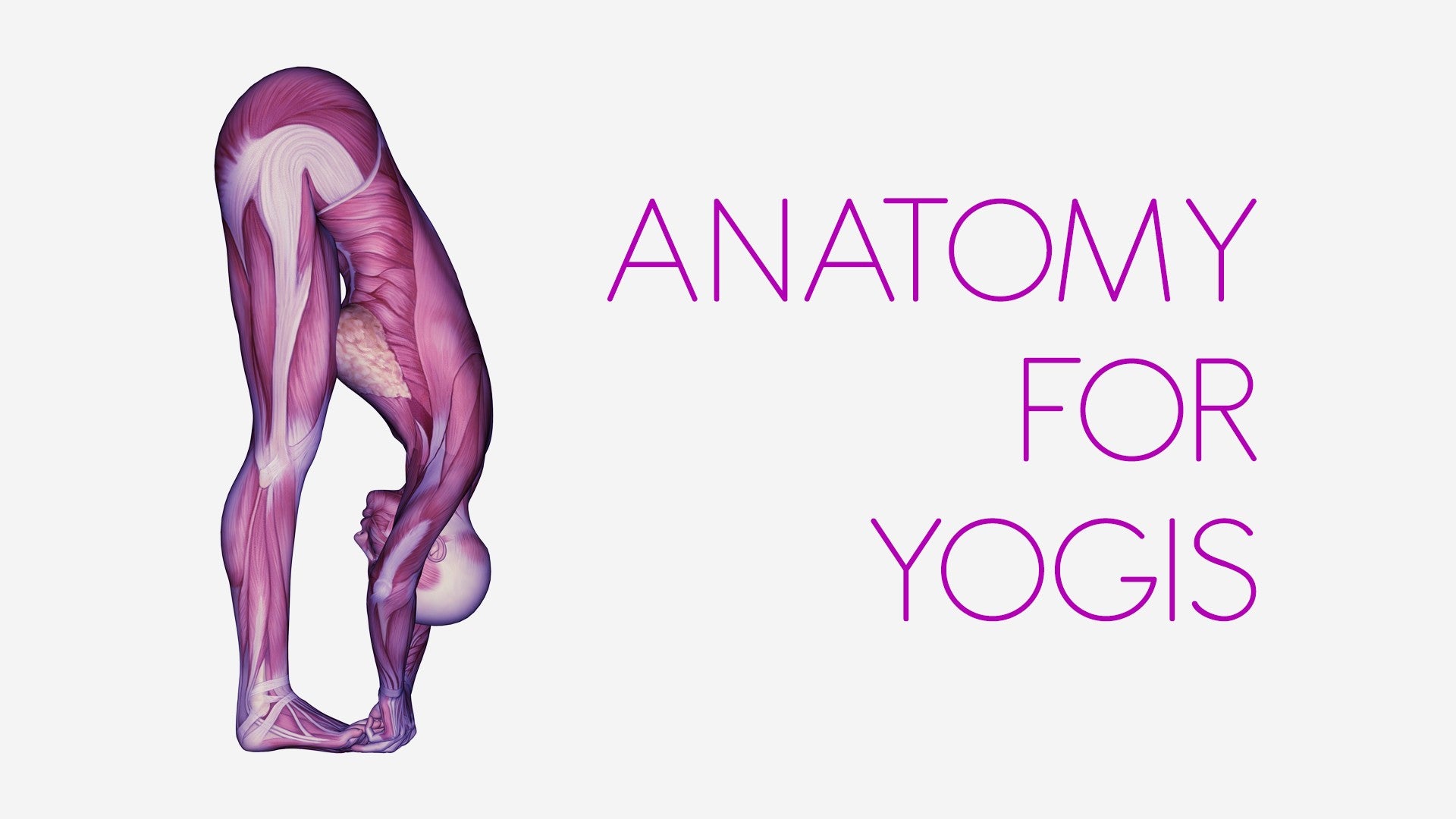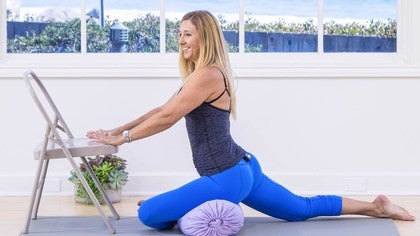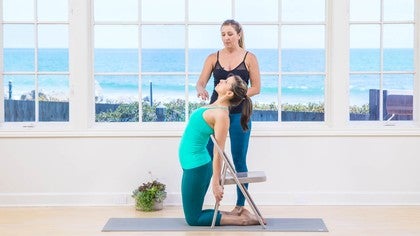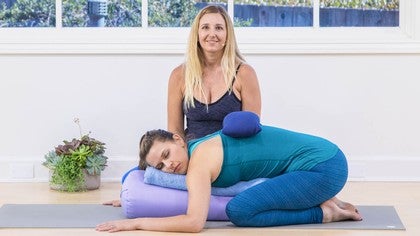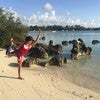Description
Transcript
Read Full Transcript
Hey there. Today's little sequence is going to be about Pigeon Pose. Pigeon is the pose that I have really strong feelings about. And again, if you've watched some of my classes, you know I talk a lot about active and passive flexibility. And I've thought a lot about Pigeon a lot, especially when I was researching. And I've done some investigating. And Pigeon is, has become, in our modern expression of yoga, it's become a very passive letting go kind of floppy pose where we go as far as we can and then we hang out there and do nothing. And it feels really good. So I don't want to take away from that. I fully understand that. But it's not doing much to strengthen our hip rotators, the muscles that are called, the group of muscles called your hip rotators. And those hip rotators have a really important job. They're like your, the rotator cuff of your shoulder, but they're the rotator cuff of your hips. And they really hold the femur bone in place. They really hold the hip joint together. And so we want to strengthen them as well. And so Pigeon is a great pose to strengthen them in because we get to stretch them a little bit. They get, get some elongation and then we strengthen them in that position. But to do that, it's actually a lot of work and it still feels really good. So don't think that it feels worse than the floppy one. It's just a little bit more effort. So I'm going to show you the classical forward bend version. And I just, before I do that, I just want to say, if you look in kind of the manuals of the last hundred years that describe pigeon pose that we're doing today, in most of them, they're upright pastures that lead you up to a back bend. I have yet to find a text by Iyengar where it's a floppy bend forward. And if it is, if there is one out there, please send it my way because I'd love to see it. I've been looking for one. But as far as I understand pigeon to be, it's a single leg, one single leg pigeon is a single leg back bend. So I'm not worried about the back bend part. I'm worried about strengthening the hip in that position. So I always use a bolster to prop myself up. I can do this pose without a bolster, but I don't have strength there. So I prefer to bring myself up a little bit. I support myself with the back hip. I don't have a lot of extension here. I don't want to lean forward and just throw my body weight over this hip joint. So I'm going to use the chair here to hold myself up. And now what I'm doing is I'm pressing this whole front leg down into the floor. So I'm pressing the ankle and the shin, whatever's touching into the floor and the outer hip and the thigh into the bolster. And I actually get some lift. I'm actually, it's like that press to rebound. I'm using my hands on the chair for some support and I'm trembling in here because I'm not used to being strong at this range of motion. I'm used to sliding the bolster out and just hanging out in the pose. That's one version. The other version that I like to teach uses a chair. It's a little bit more upright, so it's more forgiving in the back hip, the one that goes into extension. If you watch the Hanuman hips class, that will make sense to you. And so if you're upright, you don't have to work as hard on the back leg or it doesn't get pushed to its extreme joint position. So if you take any chair at home, please put it up against a wall. It's safer that way. I've just been doing this a long time and there's no wall as you can see. So I'm going to do it without one, but you basically place your foot into the corner of the chair, place one hand on the chair seat, the other one on the back, and you come forward into this pigeon shape. Then from there, I can inch this foot back. Hands go on the chair. And once again, here's me sinking into my range of motion, as you can see. And then here is me using the hip that's stretched to contract maximally. And so now I'm strengthening here, and you have to contract maximally. You can't just contract, you know, a little bit 10% effort. You really have to go strong about 80% in order to make some lasting changes. And I can feel this all the way deep inside the hip. It's not just a superficial stretch. The rotators are getting a workout. To come up, place your hand on the chair, make your way out somewhat gracefully. So try that at home. Let me know what you think. I'd love to chat with you about it some more. Thanks. Namaste.
Anatomy for Yogis: Jules Mitchell
Comments
Kim
Nope. If you're supported the knee position isn't as important as you're not loading your body weight onto the knee joint. Just do what you can and build the pose as high as you need to. If it gets silly high, then go to your back for reclining pigeon (figure 4 stretch) until you make some progress.
Cheers,
Jules
You need to be a subscriber to post a comment.
Please Log In or Create an Account to start your free trial.
